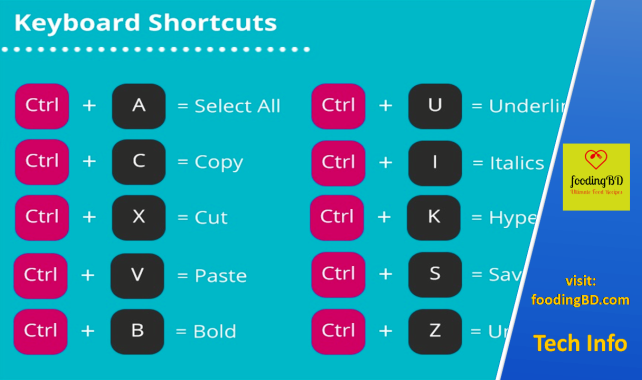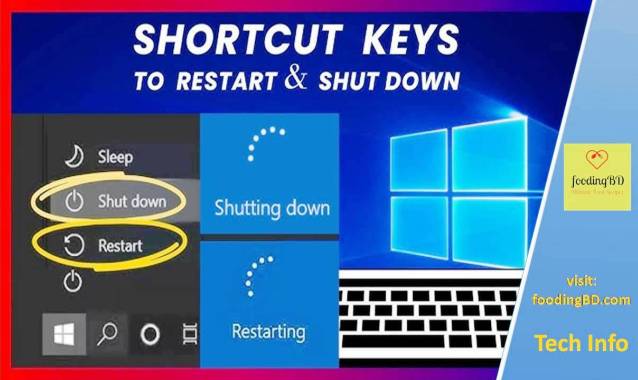What is the Difference between LED Basic And Android TV

There are two main components of an LED TV that are worth noting. One is the LCD layer, which is made up of millions of tiny pixels that can create specific colours by emitting specific wavelengths of light. Behind this layer is the LED layer, which is made up of a complex array of backlights.
LED TVs use light-emitting diodes for backlighting, while Android TVs are smart TVs powered by Google’s Android operating system. The primary difference lies in the operating system and smart functionality.
Understanding the distinction between LED TVs and Android TVs is crucial for consumers navigating the modern television market. LED TVs refer to the display technology that utilizes light-emitting diodes to illuminate the screen, promoting energy efficiency and offering a range of brightness levels.
In contrast, Android TVs are defined by their smart capabilities, running on the Android platform, which allows users to install apps, stream content, and even use voice commands through Google Assistant. While many Android TVs also use LED displays, the term “Android TV” specifically refers to the television’s smart features and connectivity options, which provide a more interactive and integrated viewing experience. Shoppers must consider these differences to choose a television that aligns with their entertainment needs and preferences.
Basic Differences Between Basic LED And Android Tv
LED TVs use a technology called Light Emitting Diodes (LEDs). These diodes create the picture you see on the screen. They are known for their brightness and clarity. Let’s break down why LED TVs are a popular choice:
- Energy Efficiency:They use less power, saving you money.
- Picture Quality:Offers sharp images with vibrant colors.
- Slim Design:Their thin profile fits anywhere easily.
LED TVs are available in various sizes. They suit any room perfectly.
Android TVs bring smart features to your living room. They run on the Android platform, similar to many smartphones. This means they can do more than just show TV channels. Here’s what sets Android TVs apart:
- Apps and Games:Access thousands of apps and games.
- Internet Connectivity:Browse the web and stream content easily.
- Voice Control:Use voice commands to search and control the TV.
Android TVs are ideal for those who want more from their TV. They transform traditional viewing into an interactive experience.
Core Technology Differences Behind Led TVs
Understanding the core technology behind LED TVs is crucial. It helps you choose the right TV. LED TVs have unique features. They use a specific type of display technology.
Light Emitting Diodes Explained
LED TVs use Light Emitting Diodes. These diodes create the images you see. They are tiny lights. They can be very bright. They also save energy. LEDs have a long life. They provide a wide range of colors. This makes the picture quality better.
- LEDs are small: They fit into thin screens.
- Energy efficient: They use less power than older TVs.
- Bright and colorful: They make the TV picture look great.
Evolution Of Led Display Technology
LED display technology has changed a lot. It started with simple screens. Now, we have advanced LED TVs. They have better colors and are thinner.
| Year | Development |
| 1990s | LEDs used as indicator lights. |
| 2000s | LED backlighting in TVs introduced. |
| 2010s | Full LED displays in TVs become popular. |
| 2020s | Advancements in LED for better image quality. |
Each step in this evolution made TVs better. Today’s LED TVs are the best. They give viewers a fantastic experience. Their technology continues to improve.
Core Technology Differences Behind Android Tvs
Think of Android TVs as a smart upgrade to your entertainment space. They do more than just showcase your favorite shows and movies. With the power of Android OS, these TVs transform your living room into a multimedia hub. Let’s explore how these smart screens stand out.
Integration Of Android Os
Android TVs come alive with the Android operating system. This means they have the same core features as an Android smartphone or tablet. Enjoy access to the Google Play Store, and download countless apps directly to your TV. This integration allows for seamless updates and a familiar interface.
Smart Features And Connectivity
- Wi-Fi and Bluetooth: Connect to the internet and other devices without wires.
- Google Assistant: Use your voice to search for content, control playback, or manage smart home devices.
- Chromecast built-in: Cast content from your phone or tablet straight to your TV.
- Multiple ports: Plug in game consoles, soundbars, or USB drives with ease.
With these features, Android TVs offer a richer, more interactive experience. They provide endless entertainment options, right at your fingertips.
Comparing Picture Quality And Performance
Let’s dive into the world of TVs, focusing on how Led TVs and Android TVs differ in picture quality and performance.
Resolution And Clarity
Led TVs and Android TVs often boast high resolutions.
The resolution determines how many pixels create the image.
More pixels mean sharper images.
4K is now a standard for both.
Yet, some Android TVs come with 8K resolutions.
This offers even more detail.
Color Accuracy And Contrast Ratios
Color accuracy and contrast ratios greatly affect the viewing experience.
Led TVs use light-emitting diodes.
These provide vibrant colors and deep blacks.
Android TVs can have LED or OLED screens.
OLEDs offer better contrast and true blacks.
They control light at a pixel level.
Both types support HDR, enhancing color and contrast.
| Feature | Led TV | Android TV |
| Resolution | Up to 4K | 4K and 8K |
| Color Accuracy | Good | Good to Excellent |
| Contrast Ratios | Varies | Varies, OLEDs excel |
| HDR Support | Yes | Yes |
User Interface And Experience
The way we interact with our TVs has changed drastically. LED TVs and Android TVs offer unique user experiences. Let’s dive into their interfaces.
Navigating Through Menus
Both LED and Android TVs feature menus to access different functions. However, the way users navigate these menus can vary significantly.
- LED TVsoften have a more straightforward navigation system. Simple remotes control basic menus.
- Android TVsoffer a complex, yet intuitive They use advanced remotes or even voice commands.
The Android TV interface is designed to resemble smartphone experiences. It allows for easy browsing through apps and settings.
Customization And User Profiles
Customization is key for a personal viewing experience. User profiles ensure everyone enjoys their own tailored content.
| Feature | LED TV | Android TV |
| Customization | Limited to basic settings | Highly customizable with themes and layouts |
| User Profiles | Not commonly supported | Supports multiple profiles for personalized content |
With Android TVs, users can download apps, change wallpapers, and create profiles. Each profile has its own recommendations and settings.
App Ecosystem And Content Availability
Today’s smart TVs offer a world of content beyond traditional cable. The App Ecosystem and Content Availability are vital factors when choosing between LED TV and Android TV. Let’s explore what sets them apart.
Access To Streaming Services
Android TVs lead in streaming options. They provide a massive selection of apps. This means users get more choices for movies, TV shows, and music. Popular platforms like Netflix, Hulu, and Disney+ are just a click away.
Games And Other Applications
Android TVs have the Google Play Store. This means access to countless games and applications. Users can download and enjoy a variety of content. From casual games to fitness apps, the possibilities are broad.
| Feature | LED TV | Android TV |
| Streaming Services | Limited | Extensive |
| Games | Few | Many |
| Applications | Basic | Diverse |
LED TVs may come with some pre-installed apps. Yet, they lack the extensive app library of Android TVs. With an Android TV, users enjoy a richer, more dynamic viewing experience.
Connectivity And Peripheral Support
Connectivity and peripheral support are vital aspects of modern televisions. They define how TVs interact with various devices and networks. LED TVs and Android TVs offer unique connectivity options. Understanding these can help you choose the right TV for your home.
Ports And Wireless Options
Both LED and Android TVs come with multiple ports. These include:
- HDMIfor high-definition video and audio,
- USBfor playing media from flash drives,
- Compositefor older devices,
- Componentfor enhanced analog video,
- Opticalfor audio devices,
- RFfor cable connections.
Wireless options vary between the two. Android TVs typically feature:
- Wi-Fifor internet connectivity,
- Bluetoothfor wireless peripherals.
LED TVs may lack Bluetooth, depending on the model.
Compatibility With Other Devices
Device compatibility is crucial for a seamless experience. Android TVs often offer better integration with:
- Smartphonesfor screen mirroring,
- Smart home devicesfor voice control,
- Game controllersfor gaming.
LED TVs may require additional hardware for these functions. Some LED TVs support basic screen mirroring through HDMI. Android TVs, however, excel in pairing with a broader range of devices.
Price Points And Value For Money
Understanding price points and value for money is key when choosing between LED and Android TVs. This section breaks down the costs and long-term benefits of each type. Making an informed decision can save you money over time.
Cost Comparison
Initially, the price tag is a big factor. Let’s compare:
| TV Type | Average Price |
| LED TV | $200 – $1000 |
| Android TV | $250 – $2000 |
Android TVs tend to be pricier. They offer more smart features.
Long-term Investment And Savings
Thinking long-term is crucial. Here’s why:
- Energy Efficiency:LED TVs consume less power, saving money on bills.
- Smart Features:Android TVs provide access to apps and updates, potentially saving on extra devices like streaming sticks.
- Future Proofing:Investing in an Android TV might mean longer before needing an upgrade.
Choosing an Android TV can be a smarter long-term investment.
Making The Right Choice For Your Home
Choosing the right TV for your home can be tough. LED TVs and Android TVs offer different features. Your choice affects your viewing experience. Let’s explore how to pick the best one for you.
Assessing Your Needs
Before choosing, think about what you need. Look at your viewing habits. Do you watch movies, play games, or stream shows? Picture quality and size matter for movies. Gamers need fast response times. Streaming fans might want built-in apps.
- Consider the room: Size and lighting can affect your choice.
- Sound quality: Are you using external speakers?
- Smart features: Do you need a TV that connects to the internet?
Future-proofing Your Purchase
Technology changes fast. Think about long-term use. Android TVs usually have regular updates. They keep your TV modern. LED TVs might not update as often. Check the specs for future technologies. Look for 4K, HDR, and smart home integration.
| Feature | LED TV | Android TV |
| Updates | Less frequent | Regular |
| App Integration | Limited | Extensive |
| Future Tech | Check model | More likely |
Final Thoughts On LED Basic TV vs. Android TVs
As we wrap up our discussion on LED vs. Android TVs, it’s clear that choosing between them depends on what you value most in a television. Both have their unique features and benefits. Let’s dive deeper into summarizing their differences and discuss personal preferences and trends.
Summarizing The Differences
Understanding the key differences between LED and Android TVs is crucial. Here’s a simple breakdown:
| Feature | LED TV | Android TV |
| Operating System | None | Android OS |
| App Availability | Limited | Extensive |
| Connectivity | Basic | Advanced |
| Control | Remote | Voice, Remote, App |
| Price | Generally lower | Varies, often higher |
Personal Preferences And Trends
Your choice between an LED and an Android TV often comes down to personal preference. Consider these points:
- Apps and Streaming:Android TVs offer more apps and streaming services.
- Price Sensitivity:If budget is a concern, LED TVs are more affordable.
- Smart Features:For advanced features like voice control, choose Android TV.
Trends show a growing demand for smart, connected devices. Android TVs, with their rich app ecosystems and smart capabilities, are leading this trend. Yet, LED TVs remain popular for their simplicity and value for money.
Conclusion
Navigating the landscape of television technology can be daunting. Yet, understanding the differences between LED and Android TVs simplifies your decision. LED TVs offer brilliant displays, while Android TVs provide a smart, customizable experience. Choose based on your viewing preferences and get ready to enjoy your favorite shows in the best way possible.




